It's unclear how we used to survive the hot summer without air conditioners. It is good that now they are in all stores. Enough to luxuriate under the warm jets of the fan - it's time to seriously deal with creating weather in the house. Our article will help you to choose the ideal conditioner for an apartment and a summer residence, and at the same time will tell about the advantages and disadvantages of existing climate systems.

Contents:
- The best manufacturers of air conditioners
- Principle of operation and air conditioning device
- Types of air conditioners
- Air conditioner selection parameters
- Which air conditioner to choose
- The cost of air conditioners
The best manufacturers of air conditioners - which firm to choose
The technology of a well-proven manufacturer is already half the success with the purchaseconditioner. The competition in this market is quite tough, therefore, each firm will try to make its goods as convenient and reliable as possible.
The following companies are among the best manufacturers of air conditioners:
- Daikin
- Fujitsu General
- Mitsubishi Electric
- LG
- Electrolux
In our ranking of the best air conditioners you will be able to learn more about the flagship models of these brands. However, when choosing an air conditioner, not only the beautiful design and high-quality assembly is important, but also the compliance of its technical parameters with the forthcoming working conditions.
Before buying, we recommend that you study all the features of modern climate technology and listen to expert advice to make the right choice.
Operating principle and air conditioner unit
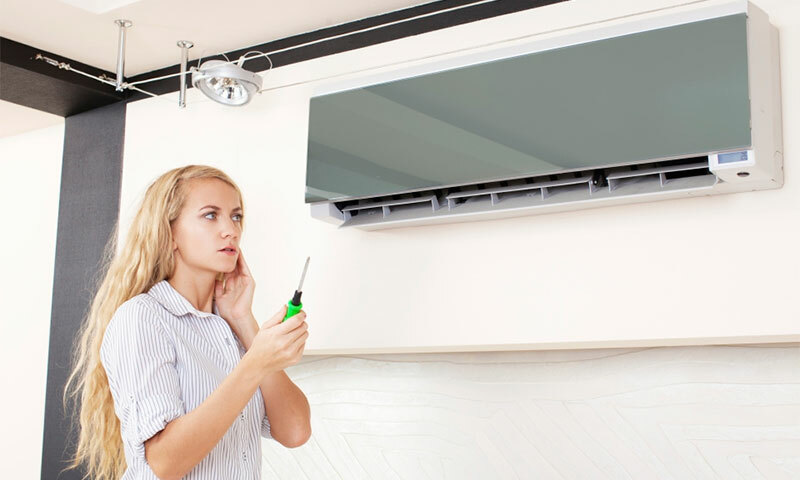
The air conditioner is a complex electromechanical device that can quickly cool indoor air. His work is based on the laws of physics on the absorption of heat by liquid( in our case, a coolant).
There is such an assembly of two important blocks:
Evaporator
Always facing inside the room and is responsible for taking heat from the air.
In the stylish box behind the panel with the movable grille, the main working units of the air conditioner are hidden:
- Evaporator proper;
- Filters that detain dust and odors;
- Indoor fans supplying chilled air to the house;
- The electronic board is the heart of the air conditioner responsible for its operation;
- Thermostat;
- Control Panel( may be absent);
- Water trap for condensate with a discharge pipe.
All this is covered by a panel with movable louver rails, which define the direction of the cooled air at the outlet.
Condenser
The outdoor unit in which the reverse process occurs - the transfer of heat from the rooms to the environment.
The following elements are located inside the condenser:
- Compressor chasing freon on internal trains and responsible for its compression;
- Radiator on which the cooling refrigerant moves;
- A fan that provides effective heat dissipation;
- Cooling System Filter;
The movement of the liquid refrigerant begins in the tract of the external unit. The compressor installed here drives it to the evaporator heat exchanger located in the room where Freon boils and turns into a gaseous state. This process is accompanied by a drop in temperature in the tubes, and the air cooled by them is blown air-conditioned into the room.
The "evaporated" and charged with energy of the selected heat, the refrigerant continues its movement towards the outdoor unit, where the compressor compresses it and again returns to the liquid state.
The reverse process occurs, accompanied by heating of the carrier to +70. . + 90 ° С.Here, a powerful fan is taken for work, which expels the accumulated heat outside, and Freon continues to circulate in the same way.
Types of air conditioners
Window

The earliest and simplest in construction monoblocks, installed in the window frame. Here, both the evaporator and the condenser are located in one housing, only the first is facing the room, and the second - into the street. With these models in the US in the 30s, the history of air conditioners began, but today many consider these devices morally obsolete. However, modern window systems prove the opposite.
Pros:
- Low cost;
- Simplicity of design;
- Simple installation( if the configuration of the window frame allows the installation of air conditioning);
- Long service life;
- Presence of forced ventilation.
Cons:
- Noisy;
- Bulky;
- Requires reliable sealing, so that the heat is not lost in the winter.
Wall mounted
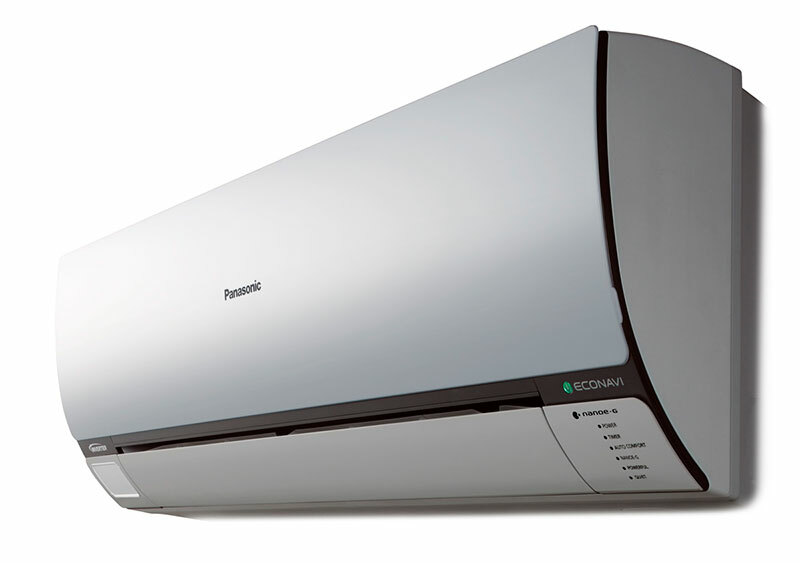
The most common and functional type of climate technology. In such models, the indoor and outdoor units are divided: the first is installed directly in the room, the second - through the wall on the facade of the building. Here, too, a tube is drawn along which condensate flows.
Pros:
- Functionality, multiple operating modes;
- Save free space;
- Maximum air cooling speed;
- Quiet operation due to the outward compressor and fan;
- Convenient use;
- Huge selection of models.
Cons:
- High cost;
- Requires professional installation.
Floor standing
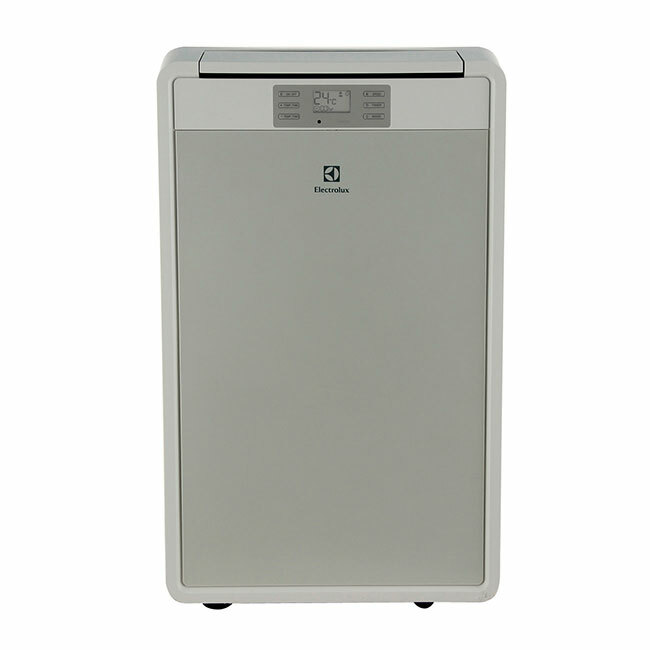
Such air conditioners can be stationary or portable, although their weight is rather large. Mobile models, like window ones, are a candy bar, inside of which are all the working elements.
A flexible hose is used to remove heated air, which is discharged through the window with special gaskets. Outdoor stationmates do not differ from wall-mounted two-unit systems - unless they are fixed under the ceiling.
Pros:
- Acceptable cost;
- Simple construction;
- Self-assembly capability;
- Portability of portable models;
- Good functionality.
Cons:
- Large size;
- Cold air pulls on the legs.
Ducted
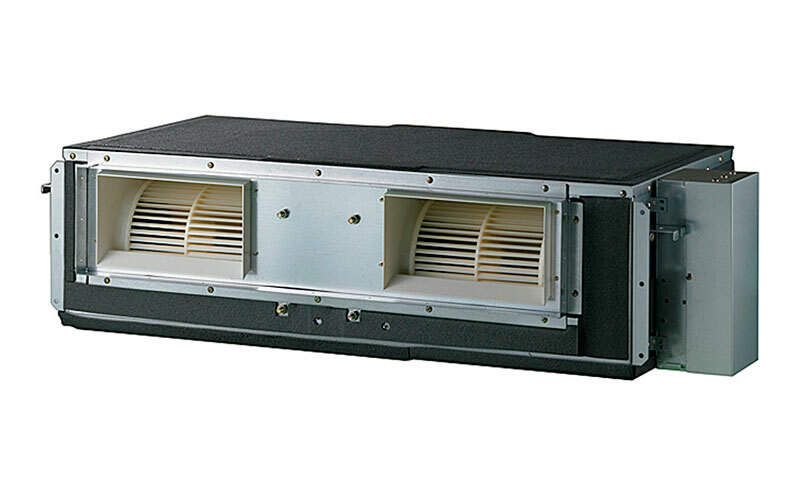
These air conditioners are installed in ventilation ducts. They are almost invisible, but because of the location peculiarities their installation and maintenance are seriously complicated. Such models have a separate evaporator and condenser, only the indoor unit is hidden in the ventilation shaft.
Pros:
- Not visible in the interior;
- Work silently;
- Save free space;
- High performance.
Cons:
- Difficult to install and maintain;
- Very high cost;
- Not suitable for home use.
Cassette
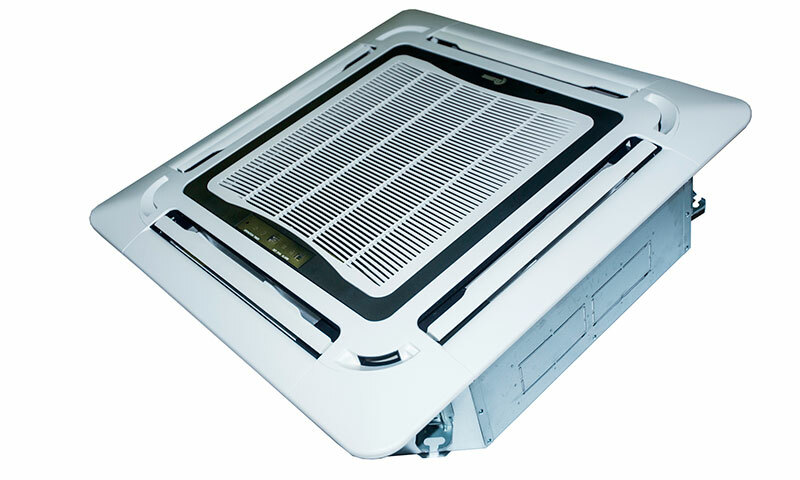
Something between the wall and channel dual-unit air conditioners. The only difference is that the evaporator is installed under the ceiling( most often suspended) and looks like ordinary ventilation.
Pros:
- High power;
- Quiet operation;
- Invisibility;
- No sense of cluttered space.
Cons:
- In rooms with high ceilings, the flow of cold air may not reach the floor;
- Beyond Value;
- Difficult to install.
Split Systems
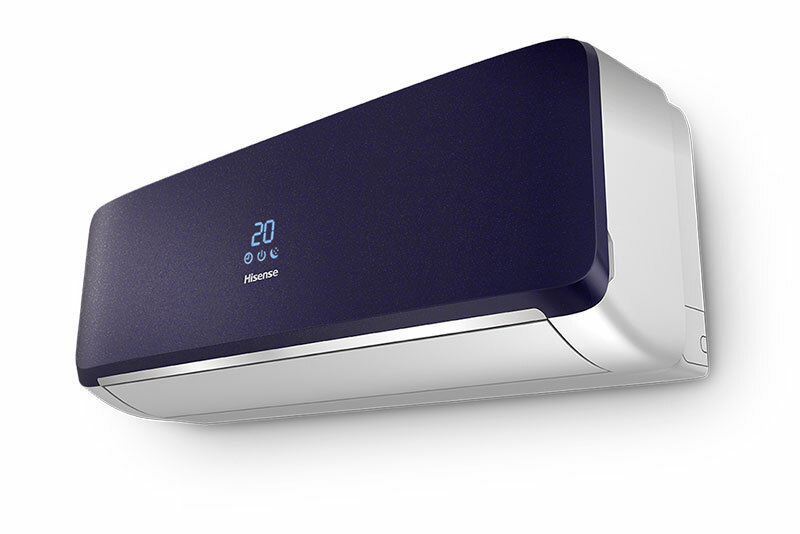
The most sophisticated and modern models of air conditioners, where several internal units are simultaneously connected to a common external unit. Basically, these are wall-mounted appliances located in the neighboring rooms, however, the way to install the evaporators can actually be any.
Pros:
- High power;
- Multifunctionality;
- Possibility to cool several rooms at the same time;
- Separate evaporator setting.
Cons:
- Beyond the price;
- Complicated installation and switching of all units.
Air conditioner selection parameters
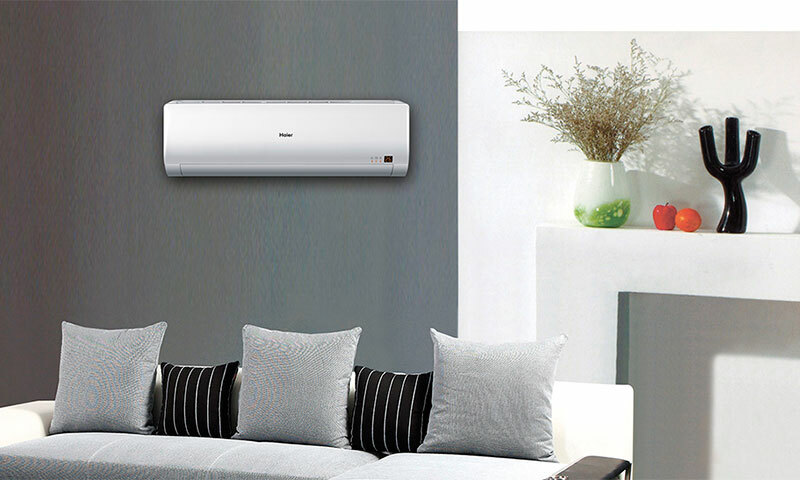
Air conditioning is not cheap, and even after installation, it will be difficult to dismantle and replace the non-approached model. Therefore, when choosing, you must immediately take into account all the nuances - you do not have the right to make a mistake.
Installation location
Strict recommendations on this item will not be, because the choice of a particular model depends on the layout of the room and the possibilities of placing a particular climate technology.
It is clear that if you do not have a hypermarket with a powerful ventilation system, there will simply be no place for channel air conditioning. But other household and close to them models themselves will prompt you what type of mounting you need:
1. If you are going to order new windows and want to save on the air conditioner, take a cheap window unit and ask the testers to calculate the frame considering its installation in the opening.
2. Want to take the air conditioner with you to the country house or just move it from room to room - look for a mobile outdoor option.
3. Do you plan to make repairs in the apartment? It's time to put a two-block wall or floor air conditioner - hole in the wall then carefully close.
4. If you have suspended ceilings for the project, you can hide the cassette unit behind them.
5. For a country house or a multi-room apartment of a large area it is better to put a split-system with wiring in all living quarters.
Power
Do not choose it on the principle of "the more, the better."Of course, the work of a powerful air conditioner is easier to adjust to your needs, which is almost impossible with a weak device. However, doing excess stock is not financially profitable - your air conditioner simply will not work out the money spent on it.
Calculate the necessary power of climate technology taking into account the main factors:
1. Room area - for every 10 m2 at a standard ceiling height of 2.5-2.7 m, 1000 watts of electricity is needed.
2. Orientation to the sides of the world - if the windows face East or South, add 20% to the calculated capacity.
3. The number of people living in the room - above the norm for each one needs 100 watts more.
Noise output
The volume of the operating air conditioner is an important parameter, especially if it is installed in the bedroom. It, in turn, depends on the capacity and design of the unit( monoblocks are noisier).Quite quiet models, unfortunately, do not exist, but you can always purchase a two-block version with maximum sound insulation.
The average noise capacity of air conditioners varies between 24-35 dB, but most modern models already have a "night mode", at which the sound level drops to a comfortable 17 dB.
Additional functions of
Good expensive air conditioners can not only cool the apartment in the summer, but also heat it in the autumn or even in the winter.
Modern climate technology can have the following additional functions:
1. Inversion - reducing the noise of work( and at the same time consuming power consumption) due to a smooth change in the compressor power. Increases the cost of the device, but increases its energy efficiency.
2. Sleep Mode - slow decrease in temperature in the room with the subsequent transition of the fan into the quietest mode.
3. Turbo - short-term launch at the maximum power( up to 20% of the nominal) for the speedy cooling of rooms.
4. I Feel - setting the thermostat to measure the temperature in the zone of the console, that is, next to the owner.
5. Defrosting the external unit and "hot start" - actual functions for air conditioners with heating mode.
6. Drain or humidify the air in the room.
Which air conditioner to choose

1. If you are looking for a cheap air conditioner and do not want to spend money installing it, choose a window or floor model. But remember: in terms of functionality they are not the best, and their power levels are low. This is an option for small rooms not intended for sleep.
2. Those who are generally annoyed by the sound of the work of climate technology, should prefer a wall model or a full-fledged split-system with the mandatory function of night mode or inversion. Such conditioners will suit both owners of large apartments or country houses.
3. For avid gardeners who visit the "hacienda" only in the summer, a floor-mounted mobile air conditioner with an average noise performance is suitable. It is desirable that it has the functions I Feel and "turbo" - thanks to them you can cool down more quickly, returning to the house from the street.
4. Want to hide the air conditioner so that it does not spoil the impression of the original interior? Take the cassette model( channel leave for large shopping centers and production shops).Just look for the device with the maximum number of newfangled functions.
The cost of air conditioners
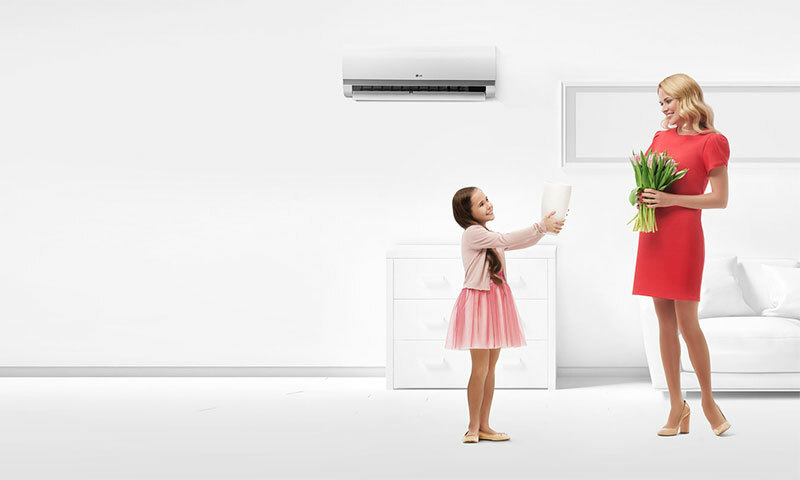
The price of the air conditioner directly depends on its capacity and set of functions, so that it is possible to navigate it when choosing. The more expensive the climate technology, the more efficient and comfortable it will be for you. However, you should not discount and mark-up for a famous name from models of famous brands.
1. Simple air conditioners will cost 9000-37000 rubles.
2. Home outdoor unit can be bought at a price of 10 to 50 thousand, the price of industrial models for large areas reaches up to 600 thousand rubles.
3. Wall-mounted air conditioners, which work only for cooling, cost 8-30 thousand rubles, with heating mode - from 15 to 200.
4. For a cassette, you will have to pay a serious amount in the range of 20-200 thousand rubles. The additional heating mode will increase the cost of the device by another 2-2.5 times.
5. Ducted air conditioners are the most expensive: 30-870 thousand, but they are purchased only by owners of large objects.
